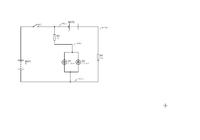vito51
Newbie level 6

this may be a newbie question but ive searched for 2 hours and cant find anything quite like what im doing. i hope i have the right category. a little on what im doing. i am using a brushless motor (3phase) with a recitfier and a switching voltage regulator to charge a battery pack from a remote control car with the power from its gasoline engine. space is a problem or id just use a relay. what im trying to do is add a LED battery indicator using a bi color led. when the power switch is turned on, i want the led to light up one color being powered from the battery pack, when the gernerator is running and charging the battery pack the led would change color. and back once the generator stops. i could use 2 leds but i want it fancy. the voltage regulator will be set to 6.9v which is the voltage of a fully charged battery pack. how do i make it work, ive been loking at transistors, but can visualize it. i came accross comparators, but cant follow that either. im not an idiot, house wiring is easy beans to me, and i know a litle bit about IC stuff. am i peeing up a rope?




